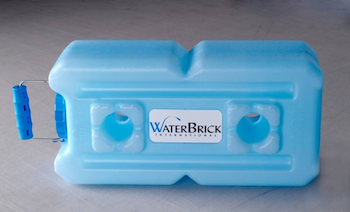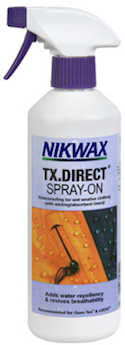Before Hurricane Irma made landfall last year, over 6.5 million Floridians — or about one-third of the state’s residents — were ordered to evacuate ahead of the storm.
Compare this response with that to Hurricane Harvey, in which no evacuation orders were issued for Houston or the surrounding area and residents were instructed to shelter in place.
Now, I’m not going to criticize local officials on whether they made the right calls. But the fact is those who evacuated had time to gather supplies to take with them.
In other words, people who left their homes ahead of the storm were able to bring along their survival gear — including food and water — in case these necessities were not available where they were headed.
Over 40,000 homes were damaged by the widespread flooding from Hurricane Harvey. Since most folks in Texas stayed in their homes, it means those who stocked emergency supplies lost most of their gear and food storage to the overwhelming floodwaters.
Flooding can occur anywhere in the country (not just hurricane-prone areas), so it’s important to be prepared if your home floods. Here are three ways to protect your emergency supplies and keep them dry the next time it pours.
Dry Bags

These bags are typically made from high-density nylon and include waterproof closures. They are designed to be completely waterproof and can be fully immersed in water. When purchasing dry bags, make sure to choose a quality brand that will hold up underwater.
Yeti makes a duffel bag that is completely waterproof and costs around $300. Other companies make less expensive dry bags, but in the small print you’ll notice it says the bag will not hold up if completely submerged for an extended period.
Do your homework before choosing a dry bag and be prepared to pay for quality. This is where you should stash cash, important papers and critical gear.
WaterBricks

I’ve mentioned the WaterBricks water storage system as the best way to store and transport water in an emergency. Well, since WaterBricks are (obviously) waterproof, you can also use them to store food, ammo, documents and anything else you want to keep safe and dry.
I suggest coming up with a color-coding system to keep your WaterBricks organized. You should denote certain colors for food, water and ammo, which will be helpful when grabbing the containers in the event of an evacuation.
Waterproofing Spray

Waterproofing sprays can be used on tents, backpacks and other survival gear to increase their resistance to water. Even though these sprays are considered waterproof, I wouldn’t rely on them to keep a bag completely impervious to moisture.
However, I still recommend spraying down all of your gear because it will help wick away water and reduce your gear’s capacity for absorption. Nikwax makes a waterproof spray that will also protect your gear from sun damage and is safe to use on many different types of material.
In addition to these items, keep a few dry pouches on hand for your cellphone or radio so you can stay informed during a disaster. Ziploc bags and duct tape will also work in a pinch.
The fact is you should be prepared for flooding no matter where you live. Whether it’s a torrential downpour or a broken pipe in your home, you don’t want all your carefully cultivated survival gear and food storage to get waterlogged.






